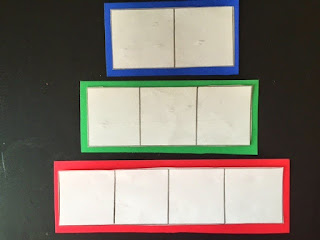I also remember sitting on my grandpa’s lap as he’d read the Sunday comics to me. I think the cartoons were much more “child friendly” in the 50’s than they are now. However, it might be interesting to save some of the comics from the newspaper this weekend and share them with your class. Explain how cartoonists use “bubbles” to let you know what the characters are saying.
You could also let the children draw pictures of themselves or their friends and then use bubbles to make them talk.
Comics can also be used to reinforce standards. Start off by giving children copies of a cartoon frame with 2 sections. Tell them to think of a story that has a beginning and an end and draw it.
Next, let them think of a story with a beginning, middle, and end.
Finally, challenge them to create a story with 4 sections.
*Have children recall the sequence of a story with comic frames.
*Use comic frames to illustrate the life cycle of a butterfly, the water cycle, plant growth, and so forth.
Here’s a link to download blank cartoon frames:

https://drive.google.com/file/d/0B1SnEagA4jljTjMyU21nWDZTN00/view?usp=sharing
Cartoons That Move
Would you like to learn how to make cartoons that move? It’s easy peasy, but you’ll surely impress your students when you teach them how to do this.
Hint! I would only do this with primary grade children.
Materials: white copy paper, stapler, black pen or pencil
Directions:
1. Fold the paper into fourths and cut on the creased lines.
3. Lift the top layer and draw a simple shape on the bottom. Keep your drawing on the bottom half of the page.
4. Now, place the top sheet over the bottom and trace over the lines. Vary one or two features, such as arms, ears, mouth, etc.
5. Take a pencil and roll the top sheet up around the pencil.





